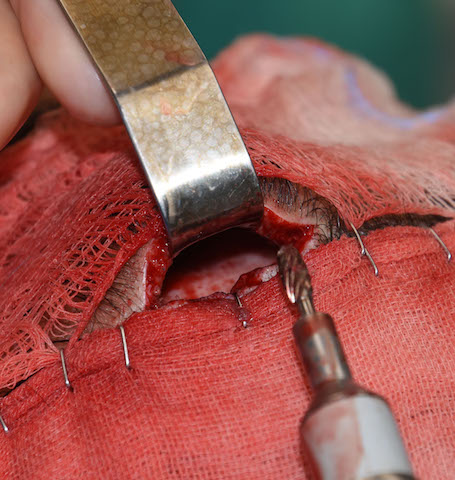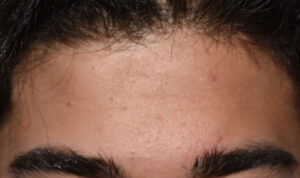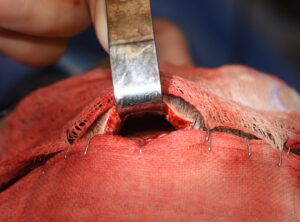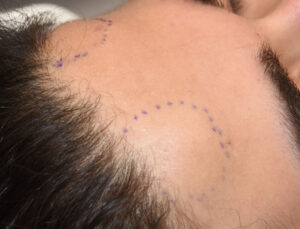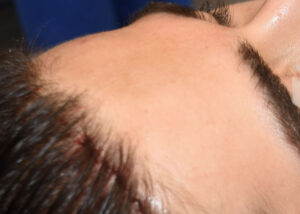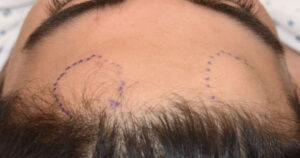Background: The frontal bone which makes up the forehead develops from bony outgrowths of the frontal eminence region. As a result it occurs in some people that the frontal eminences may remain somewhat prominent when the forehead is fully developed. Because there is a frontal eminence on each side of the forehead any residual prominence is frequently paired (bilateral appearance) and is given the name ‘forehead horns’.
While prominent frontal eminences are benign and cause no functional issues, they can be an aesthetic issue. Because the forehead is so exposed and is usually a smooth surface, bumps that exist in the upper forehead can be a source of aesthetic dissatisfaction. In some forehead horn patients they are very evident while in other patients they are only seen in certain lighting and angles.
Whether they are big or small forehead horns can be successfully reduced. They are raised low level rounded areas of bone that can be burred down. The thickness of the forehead bone will usually allow successful reduction. (down close to or into the thin diploic space) The key issues in doing so is the location and length of the incision and the necessary hair management around it.
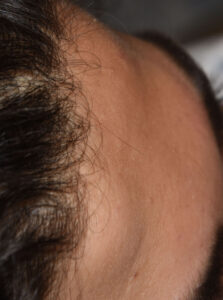
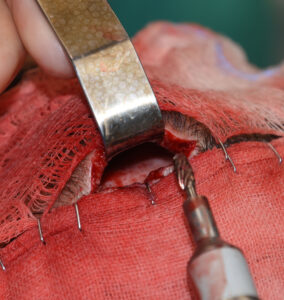
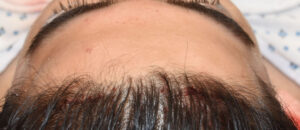
Case Highlights:
1) Forehead horns are benign paired overgrowths of the frontal eminences of the forehead.
2) Forehead horn reduction can be done through a hairline or retro hairline approach using a burring technique.
3) The small incision tunnel technique allows just working room to perform an adequate bone reduction.
Dr. Barry Eppley
Indianapolis, Indiana

